
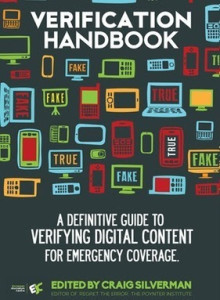
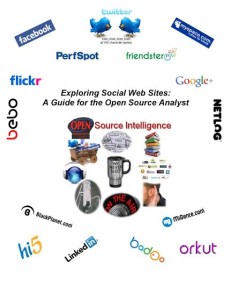
PDF (32 Pages): Ben Benavides Social Web Sites A Guide
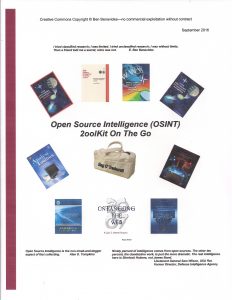
PDF (255 Pages): 2016-osint-2oolkit-benavides
Also by Ben Benavides:
Ben Benavides: Desktop OSINT Handbook
Ben Benavides: Exploring Social Media Web Sites: A Guide for the Open Source Analyst
Continue reading “2016 Ben Benavides OSINT 2ool Kit On The Go Bag (Bag O’Tradecraft)”
It was born at a 48 hour workshop at MozFest 2011 in London. It subsequently spilled over into an international, collaborative effort involving dozens of data journalism's leading advocates and best practitioners – including from the Australian Broadcasting Corporation, the BBC, the Chicago Tribune, Deutsche Welle, the Guardian, the Financial Times, Helsingin Sanomat, La Nacion, the New York Times, ProPublica, the Washington Post, the Texas Tribune, Verdens Gang, Wales Online, Zeit Online and many others.
This handbook introduces you to the legal, social and technical aspects of open data. It can be used by anyone but is especially useful for those working with government data. It discusses the why, what and how of open data – why to go open, what open is, and the how to do open.
An Open Knowledge Foundation project.
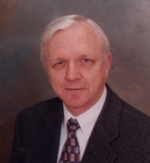
PLATINUM LIFETIME ACHIEVEMENT, Dr. Ran Hock
Dr. Ran Hock has done more than any single individual to educate both government and private sector parties with respect to the value of the deep web. He has single-handedly trained hundreds of individuals in the nuances of this major new intelligence resource base. Emphasizing individual analytic skills and common sense rather than arcane expensive and generally unproductive technologies, he represents the intersection of integrity, intelligence, and intuition in the service of all legitimate governments and organizations.
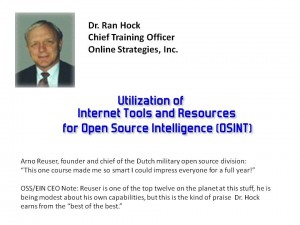
The blurb from Arno Reuser, founder and chief of the Dutch military open source intelligence division, says essentially that attending Ran Hock's course once a year made him look smart for the entire year. Arno is a master librarian and a giant in the field, he is being modest, but this is the kind of praise that Ran Hock's earns from the “best of the best.”
See Also:
ROBERT D. STEELE is a retired Marine Corps infantry and intelligence officer and also qualified as an S-1/Adjutant, with service at all levels from platoon to Service Headquarters. After four years active duty (the balance in the Individual Ready Reserve) and a decade in the clandestine service of the Central Intelligence Agency (including three tours overseas focused on terrorist and extremist targets), he resigned from the CIA to accept a Marine Corps invitation to be the senior civilian responsible for creating the Marine Corps Intelligence Center (today a Command) and served as the study directory for the flagship study, Overview of Planning and Programming Factors for Expeditionary Operations in the Third World. He resigned from the Marine Corps civil service in 1993 to lead the modern Open Source Intelligence (OSINT) revolution, and is the author of the DIA, NATO, and SOF OSINT Handbooks, as well as personally responsible for training 7,500 officers from 66 countries. His latest book, INTELLIGENCE for EARTH: Clarity, Diversity, Integrity, & Sustainability, outlines a course of action for creating public intelligence in the public interest across all organizations, beginning with the United Nations. Mr. Steele founded OSS.Net, Inc. and Earth Intelligence Network, the latter a 501c3 public charity, and is the foremost proponent for a Swedish concept enhancing Multinational, Multiagency, Multidisciplinary, and Multidomain Information-Sharing and Sense-Making (M4IS2). Mr. Steele holds graduate degrees in international relations and public administration from Lehigh University and the University of Oklahoma. He has also earned a certificate in intelligence policy from Harvard University and a diploma in defense studies from the Naval War College.
EDIT: None of these are “handbooks” in the classical sense of the word, but all are strategic guides that set the standard for holistic approaches to human intelligence, information operations, and analytic intelligence.